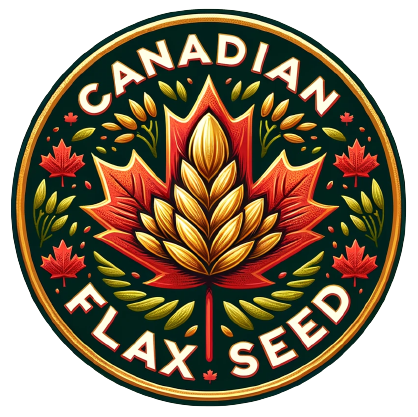Trade and Exchange: Flaxseeds and the Fur Trade in Canada
Table Of Contents
Trade And Exchange: Flaxseeds And The Fur Trade In Canada | Exploring Trade and Exchange of Flaxseeds in the Fur Trade in Canada
Key Takeaways
- Summary of the fur commerce in Canada and its historical significance.
- Importance of flaxseeds in the commerce and barter system.
- Interaction patterns between flaxseeds and fur products in trade.
- Differences in fur trade practices across various regions.
- Effects of commerce on the environment and cultural practices.
Trade And Exchange: Flaxseeds And The Fur Trade In Canada | Overview of the Fur Trade in Canada
The fur trade in North America played a crucial role in shaping the economy and culture of early Canadian settlements. As fur traders navigated expansive trade routes, they established vital connections between Indigenous communities and European markets. This flourishing fur industry not only facilitated the exchange of goods but also laid the groundwork for diverse trading practices, including the incorporation of agricultural products such as flaxseeds. The growing fur trade in British Columbia became particularly significant, as it attracted various players eager to capitalize on the rich resources of the region. Trade and Exchange: Flaxseeds and the Fur Trade in Canada highlights how these interactions between commodities created a dynamic system of external trade, influencing both local economies and broader maritime trade networks.
Trade and Exchange: Flaxseeds and the Fur Trade in Canada | Historical Significance of the Fur Trade
The fur trade in Canada played a pivotal role in shaping the nation’s early economy and establishing intricate trade networks across vast territories. The American Fur Company emerged as a dominant force, capitalizing on the rich resources of the Canadian Shield. French Canadian trappers and traders not only contributed to the booming beaver trade but also facilitated the exchange of goods between Indigenous populations and European settlers. This historical significance extends to the influence of the flax industry, which became intertwined with the fur trade, highlighting the diverse economic activities that fueled the Canadian economy.
The trade dynamics within the fur industry often intersected with the broader context of trade and exchange, including the notorious slave trade that affected various regions, including Western Canada. Trading posts became crucial hubs where furs were exchanged for other commodities, including flaxseeds, reflecting the interconnectedness of these two industries. As the fur trade evolved, it not only bolstered the livelihoods of those involved but also left a lasting impact on Canadian identity and culture. The melding of these industries underscores the importance of understanding the historical significance of the fur trade in Canada.
- The fur trade significantly contributed to Canada’s economic development in its early years.
- Indigenous peoples played a crucial role in the fur trade, acting as guides and trappers.
- The exchange of flaxseeds and furs illustrates early globalization and trade networks.
- Trading posts helped establish lasting relationships between European settlers and Indigenous communities.
- The decline of the fur trade influenced the transition to other industries in Canada.
- Economic interdependence developed between different regions through trade connections.
- The fur trade’s legacy is reflected in contemporary Canadian culture and identity.
Key Players in the Fur Trade
The fur trade in Canada involved a diverse array of key players, each contributing to the dynamic landscape of Trade and Exchange: Flaxseeds and the Fur Trade in Canada. Indigenous peoples were among the first participants, engaging in fur trapping and trading with European settlers. Companies such as the Hudson’s Bay Company played a prominent role, establishing trade posts and facilitating exchanges that included not only furs but also agricultural commodities like flaxseed. These entities navigated complex regulations, including import duties imposed by the government of Canada, which shaped the flow of trade and impacted the costs and freight of goods.
The involvement of the Canadian government and the federal government of Canada established frameworks that governed fur farming and exchange practices. Some players, influenced by the ripple effects of the African slave trade, saw an intertwined market ecosystem where various commodities were exchanged. The International Chamber of Commerce supported the regulation of trade practices, ensuring fair practices in this burgeoning economy. As trade dynamics evolved, the interactions among these players highlighted the significance of fur and flaxseed as vital commodities shaping Canada’s economic landscape.
The Role of Flaxseeds in Trade and Exchange
Flaxseeds played a crucial role in the trade and exchange dynamics of early Canada, particularly within the framework of the fur trade economy. The cultivation and processing of flax yielded commodities like flaxseed oil, which became valuable goods in trade with European markets. Indigenous people in Canada engaged in these economic activities, leveraging their knowledge of the land and the cultivation of flax to participate in the commercial fur trade that flourished during this period. Treaties established between various groups, including the French, Iroquois, and other Indigenous tribes, facilitated the exchange of goods, including flax and fur, further embedding flaxseed into the economic landscape. The interactions during events like the French and Iroquois Wars shifted trade practices in Lower Canada and shaped the emerging fur-trade society. As a result, the intertwining of flaxseeds and fur established a unique economic relationship that underscores the significance of Trade and Exchange: Flaxseeds and the Fur Trade in Canada.
Flaxseeds as a Commodity in Early Canadian Trade
In the context of Trade and Exchange: Flaxseeds and the Fur Trade in Canada, flaxseeds emerged as a significant commodity amid the bustling activities of the fur trading industry. Canadian traders recognized the potential of flaxseed imports, incorporating them into the trade goods exchanged at fur trade posts and trading outposts. These commodities became vital for sustaining fur trade profits and meeting fur-market demands. The historic fur trade provided an essential framework for the exchange of goods, transforming the economic landscape of the region and creating a network that connected various communities through mutual benefit.
The cultivation of flaxseeds supplemented the fur trading activities, allowing traders to diversify their offerings. The burgeoning agricultural sector contributed to fur-trade returns as British fur traders sought to maximize good trade opportunities. As trade inland expanded, the interplay between flaxseed production and fur trade became increasingly important for sustaining local economies. The integration of flaxseeds into the fur economy not only enhanced the viability of fur trading outposts but also underscored the interconnectedness of agriculture and industry during this transformative period in Canadian history.
Economic Impact of Flaxseed Trade on Indigenous Communities
The Trade and Exchange: Flaxseeds and the Fur Trade in Canada significantly influenced Indigenous communities, transforming their economic landscapes. Flaxseeds emerged as a vital agricultural product, creating new avenues for profitable trade. Indigenous peoples engaged in the trading process by offering choice furs to European fur traders, leveraging good trading relations to secure favorable deals. Their involvement in the flax market allowed them to access imported goods and improve their agricultural practices, contributing to the overall economy.
The establishment of flax export markets provided Indigenous communities with an opportunity to diversify their income sources. As European demand for flaxseeds grew, the competition intensified, leading to a shift in focus from traditional hunting and fur trading to plantation trade. This adaptation to the changing economic environment not only bolstered their economic standing but also enhanced their flexibility within the competitive trade landscape. Balancing both exports of furs and flaxseeds allowed Indigenous communities to strengthen their position within the English trade item framework.
Trade Dynamics between Flaxseeds and Furs
The interplay between flaxseeds and furs in early Canadian commerce illustrates a complex Trade and Exchange: Flaxseeds and the Fur Trade in Canada. During this time, Saskatchewan flax development positioned the region as a major flax exporter, creating a significant agricultural trade system alongside the established fur-rich areas. Early trade routes connected trading settlements, fostering a vast trade network that included both legitimate transactions and illicit trade. These trading relationships not only facilitated the exchange of staple fur products but also opened avenues for the import of world flaxseed, aligning with the demands of international grain markets. Western trading posts emerged as hubs for this dynamic, highlighting the interconnectedness of agricultural and fur trade economies.
Bartering Practices in the Fur Trade
Bartering stood at the core of the fur trade in Canada, intertwining the interests of fur companies and Indigenous communities. This system allowed for the exchange of goods and services without the immediate use of currency. Fancy furs became valuable commodities exchanged for various products, including utilized flaxseed from Canadian producers. Major trading posts emerged as central hubs where these exchanges took place, facilitating connections between local communities and distant markets. The Canadian climate played a significant role in flax production, making it a desirable item in trade alongside furs.
Trade and Exchange: Flaxseeds and the Fur Trade in Canada also highlighted the importance of efficient import handling and export customs declarations. Canadian flax growers benefited from this dynamic trading system, exporting their products while simultaneously acquiring goods from the fur trade. This reciprocal relationship fostered strong trading connections between Canadian Indigenous tribes and European settlers, including the powerful Russian fur company. The flow of goods underpinned the economic landscape, shaping the interactions and dependencies that characterized this vital aspect of Canadian history.
- Increased trade networks among Indigenous tribes and European settlers
- Development of major trading posts as central hubs of commerce
- Exchange of furs for essential goods like tools, textiles, and food
- Influence of the climate on agricultural production and trade dynamics
- Creation of reciprocal relationships benefiting both Indigenous and European economies
- Emergence of a unique barter economy distinct from cash transactions
- Establishment of long-lasting cultural connections through trade relationships
Agricultural Influence on Fur Trade Economics
The intricate dynamics of trade and exchange between flaxseeds and the fur trade in Canada have shaped economic relationships throughout the region. Montreal merchants played a crucial role in connecting Canadian bourgeois with European markets, leading to a flourishing economy that included fancy fur as a high-value commodity. The demand for goods like furs created a dependency on Canadian labor while also impacting indigenous-French relations as trading contacts evolved. Small trading parties, often composed of French traders and indigenous groups, facilitated the exchange of valuable goods alongside U.S. flax grows, illustrating the complexity of the trade network.
Agricultural production, particularly flaxseed cultivation, significantly influenced the fur trade economics in Canada. As the coast-factory trading policy expanded, it allowed for the incorporation of agricultural goods into established trading practices. New York traders recognized the potential of working with Canadian farmers, further blending agricultural products with traditional fur offerings. This integration not only diversified the market but also fostered interdependencies that connected local economies to broader transatlantic trade routes, emphasizing the reciprocal nature of Trade and Exchange: Flaxseeds and the Fur Trade in Canada.
Regional Variations in the Fur Trade
The fur trade in Canada exhibited significant regional variations, influenced by local markets and the availability of resources. Eastern Canada became a critical hub for fur traders, where permanent trading posts facilitated interactions between indigenous allies and European traders. Flax producers contributed to this dynamic by introducing various flax varieties as an emerging commercial commodity. Trade clauses often favored good flax sales, allowing traders to benefit from the industrial commodity status of flax. Free traders navigated the complexities of indigenous-European relations, leveraging their networks to enhance the trade and exchange of products. The integration of flax into the fur trade ecosystem underscored its importance in sustaining economic relationships across the region.
The Role of Eastern Canada in the Fur Trade
Eastern Canada played a pivotal role in shaping the dynamics of the fur trade, particularly as a region where European customs began to influence Indigenous practices. The establishment of old trading posts fostered a vibrant trade network, connecting fur-gathering areas with traders from as far away as Pennsylvania. This interaction encouraged the exchange of goods and knowledge, leading to the evolution of both flax and fur markets. Saskatchewan flax growers contributed to this landscape by providing flaxseed samples, which were essential for the development of regional agricultural practices and contributed to the overall economy.
Flax field studies in Eastern Canada showcased the potential of flax as a commodity in the fur trade. With the rise of new trading posts along the expansive Arctic territories, merchants sought efficient export clearance processes to facilitate trade. Flax residues became valuable byproducts in these exchanges, highlighting the interconnected nature of agriculture and fur trading. The interplay between the cultivation of flax and the fur trade allowed for a diversification of markets, benefiting local economies and transforming Eastern Canada into a crucial player in the broader Trade and Exchange: Flaxseeds and the Fur Trade in Canada.
The Influence of Western Canada on Flaxseed and Fur Markets
Western Canada played a pivotal role in the Trade and Exchange: Flaxseeds and the Fur Trade in Canada, particularly in influencing the agricultural practices that supported both industries. The region’s ability to cultivate a robust flax crop enhanced the supply of essential raw materials such as brown flax and flax straw. This was critical for the production of flax fibre, which found various applications in industrial markets. The availability of flaxseed oil suitable for trade further bolstered economic relationships not only with the eastern territories but also with the American colonies, creating a network of exchange that included both agricultural goods and fur products.
The strategic location of Western Canada facilitated the movement of trade goods across expansive distances, allowing for efficient processing of beaver furs collected from the area. Freight insurance emerged as a necessity in this bustling trade environment to safeguard shipments of flax and furs. Flax cultivation flourished in this region, promoting a dual economy that sustained local Indigenous communities while enhancing their involvement in colonial affairs. The synergy between the flax industry and the fur trade was instrumental in driving the economic landscape of Western Canada, establishing it as a significant contributor to the broader framework of Trade and Exchange: Flaxseeds and the Fur Trade in Canada.
Environmental and Cultural Impacts of Trade
The Trade and Exchange: Flaxseeds and the Fur Trade in Canada significantly shaped both environmental practices and cultural relationships among different communities. The increase in flax production acres influenced local economies, enabling small traders and larger entities alike to capitalize on the market for flax fiber. French merchants played a critical role in establishing colonial relationships that facilitated the trade of both flax and furs. As flax wasn a vital industrial feedstock, its cultivation directly impacted the soil composition and agricultural practices on Canadian soil regularly. The Saskflax newsletter highlighted ways to spread knowledge about sustainable practices, which aimed to enhance transport contracts and improve efficiency towards market facilitation. This intricate web of trade not only transformed the economic landscape but also fostered a cultural exchange that resonated through communities involved in the fur and flax trade.
Sustainable Practices in Fur and Flaxseed Trade
Sustainable practices in the trade of flaxseeds and furs were influenced by the intricate relationships between merchants and local producers. The presence of flax plants provided valuable raw material for the burgeoning domestic textile industry, establishing Montreal agents as key players in the distribution network. With good supply from the surrounding regions, including those cultivated by First Nations allies, merchants redistributed flax products. The Flax Council, alongside organizations like Saskflax, ensured that the cultivation of flax remained environmentally friendly while promoting its role in the economy.
The synergy between different nations and the domestic market shaped the direction of the fur trade. French settlers recognized the importance of flax as an important supplier for various coverings needed in trade goods. Historical accounts illustrate how the integration of flaxseed products alongside fur trading practices created a multifaceted approach to resource management. As trade and exchange evolved, the emphasis on sustainability became more pronounced, paving the way for practices that benefited both the environment and the community.
| Practice | Description | Benefits |
|---|---|---|
| Crop Rotation | Alternating the types of crops grown in a particular area to maintain soil health. | Prevents soil depletion and promotes biodiversity. |
| Organic Farming | Utilizing natural methods for pest control and fertilizer without synthetic chemicals. | Reduces environmental impact and promotes healthier produce. |
| Community-Based Trade | Encouraging local producers to engage in trading directly with consumers. | Enhances local economies and reduces carbon footprint by minimizing transport. |
| Sustainable Harvesting | Ensuring that fur and flax products are sourced from responsible suppliers. | Protects wildlife populations and preserves ecosystems. |
Conclusion
The intricate dynamics of Trade and Exchange: Flaxseeds and the Fur Trade in Canada reveal a rich tapestry of interconnectedness among various nations and communities. Eastern and Western Canada served as pivotal trans-shipment points, fostering essential alliances that ensured a sure supply of both furs and flaxseeds. The role of flax growers became increasingly significant as they contributed to the economic landscape, creating a robust market that benefitted Indigenous communities and European settlers alike. This complex interplay of trade not only highlights the historical importance of these commodities but also underscores the lasting impact of such exchanges on Canadian society and its diverse cultural fabric.
FAQS
How did the development of flax as a commercial commodity influence the early fur trade in Canada, particularly in Saskatchewan?
The development of flax as a commercial commodity had a significant impact on the early fur trade in Canada, especially in Saskatchewan. Canadia’s fur interests benefited from the simultaneous export of furs and the cultivation of flax, which became an important fur trading resource. The flax commission encouraged the growth of this Canadian plant, providing an international fabric staple. Alberta and Saskatchewan farmers produced unretted flax, while traders from Pennsylvania became involved in the trade process as they shipped beaver furs and other goods to European markets. This trade dynamic enriched the fabrication process, showcasing how domestic resources elevated fur-trade profits throughout the vast fur domain across various countries.
How did the role of flax as a commercial commodity for Canadians impact the process of exported furs in Saskatchewan?
The role of flax as a commercial commodity for Canadians significantly impacted the process of exported furs in Saskatchewan. As flax evolved into a valuable crop, it attracted Pennsylvania traders and French settlers who were sent to the area by Gaultier. This shift allowed Canadians to utilize flax in trade with European goods, enhancing the fur trade by providing a means to process beaver furs more efficiently and diversifying the resources exported from the country, including both flax and furs.
What was the impact of the introduction of flax as a commercial commodity on the labor dynamics in Saskatchewan and Canada during the fur trade era, particularly involving French settlers from the subcontinent?
The introduction of flax as a commercial commodity significantly influenced labor dynamics in Saskatchewan and Canada. It created new opportunities for Canadian labor, particularly when French settlers from the subcontinent migrated and contributed to the cultivation and trade of the word flax, which in turn supported the fur trade and enhanced economic activities in the region.
What role did commercial commodities like flax play in the economic development of Saskatchewan and Canada, especially regarding Canadian labour involving French settlers?
The introduction of commercial commodities such as flax had a significant impact on the economic landscape of Saskatchewan and Canada. This development provided new opportunities for Canadian labour, particularly for French settlers who contributed to the agricultural sector. The increase in flax production supported the fur trade and broadened the overall economic activity in the region, highlighting the interdependence of agriculture and fur trading in the growth of Saskatchewan and Canada.
How did the arrival of French settlers influence the use of commercial commodities like flax in Saskatchewan and Canada during the fur trade?
The arrival of French settlers significantly impacted the use of commercial commodities in Saskatchewan and Canada. They played a crucial role in developing trade networks that utilized materials such as flax, which became important in the fur trade. These settlers brought new farming techniques and market strategies that helped integrate flax into the existing economy, ultimately benefiting both local communities and the fur trade industry in Canada.
In what ways did French settlers affect the agricultural practices related to commercial commodities like flax in Saskatchewan and Canada during the fur trade period?
The arrival of French settlers significantly influenced agricultural practices in Saskatchewan and Canada, particularly in the cultivation of commercial commodities such as flax. Their methods and expertise helped establish flax as a vital crop, which subsequently integrated into the local economy and trade systems. This interaction contributed to a more diverse agricultural landscape in Canada during the fur trade era.
How did the settlement patterns of French settlers influence agricultural practices in Saskatchewan and Canada during the fur trade period?
The arrival of French settlers significantly impacted agricultural practices in Saskatchewan and Canada. Their methods led to the cultivation of various crops, which enhanced the productivity of the land. The incorporation of these agricultural practices contributed to the economic landscape, providing essential goods and support for the fur trade, particularly influencing local economies and food supply in the region.
How did the participation of French settlers in the fur trade contribute to the agricultural landscape of Saskatchewan and Canada?
The involvement of French settlers significantly influenced the agricultural practices in Saskatchewan and Canada, leading to the cultivation of various crops and enhancing the agricultural landscape. Their contributions were pivotal in establishing a connection between farming and the fur trade, which ultimately helped in shaping the economy in regions like Saskatchewan and Canada as a whole.
How did the use of flax in trade influence the settlement of French settlers in Saskatchewan and Canada during the fur trade era?
The use of flax in trade significantly influenced the settlement of French settlers in Saskatchewan and Canada, as it provided them with valuable agricultural opportunities that integrated into the fur trade economy. This integration allowed French settlers to enhance local agricultural practices, thus shaping the economic landscape of Saskatchewan and Canada.
How did the presence of French settlers impact the agricultural economy in Saskatchewan and Canada during the fur trade era?
The presence of French settlers significantly influenced the agricultural economy of Saskatchewan and Canada during the fur trade era, leading to the introduction of diverse agricultural practices that improved productivity. Their settlement patterns directly contributed to the development of farming techniques that were essential for sustaining both the local population and the fur trade economy in Saskatchewan and Canada.







